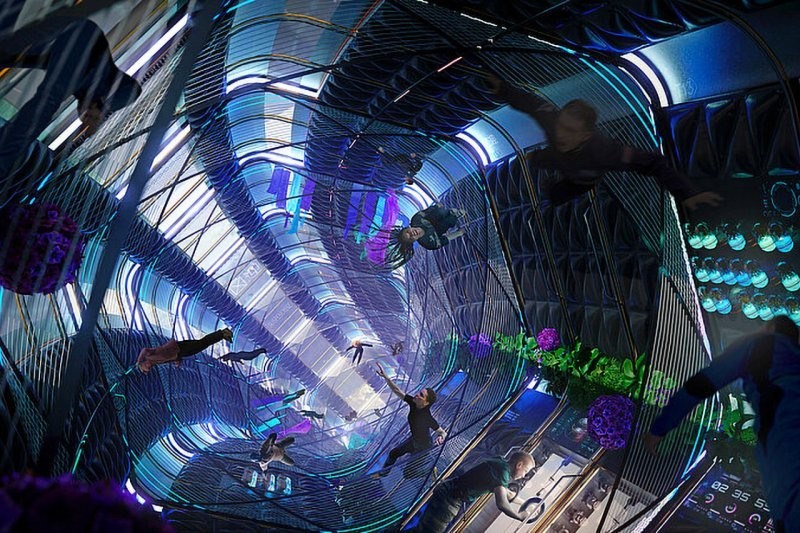Concept of an elevator that can take passengers into space (7 photos + 1 video)
Traveling into space could become as common as riding in an elevator. British architect Jordan William Hughes thinks so. He presented a “space elevator” project called Ascensio and was awarded an international prize from the Jacques Rougerie Foundation. 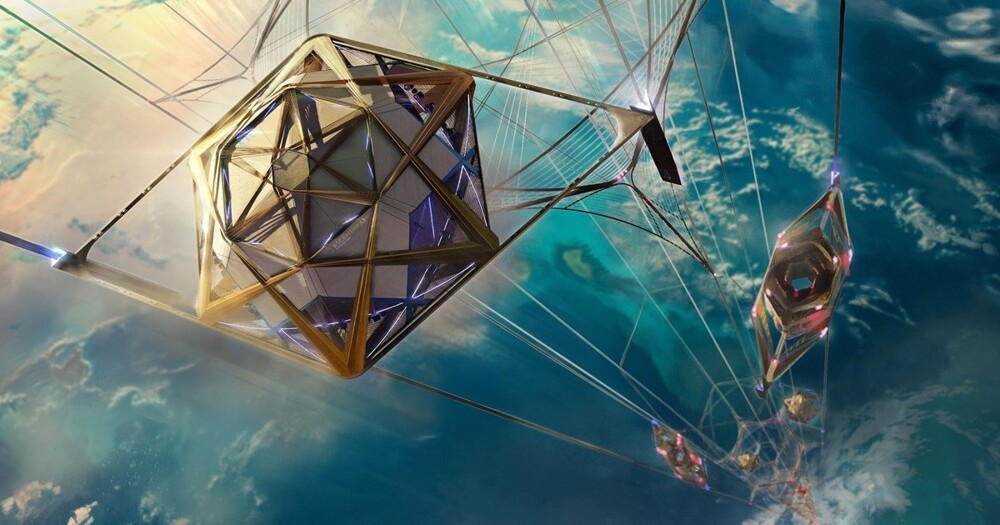
According to the architect's idea, the launch pad will be a ship in the ocean, which will be connected by special cables to the space station. Six elevators (three freight and three with windows and oxygen for people) will run to and from space. 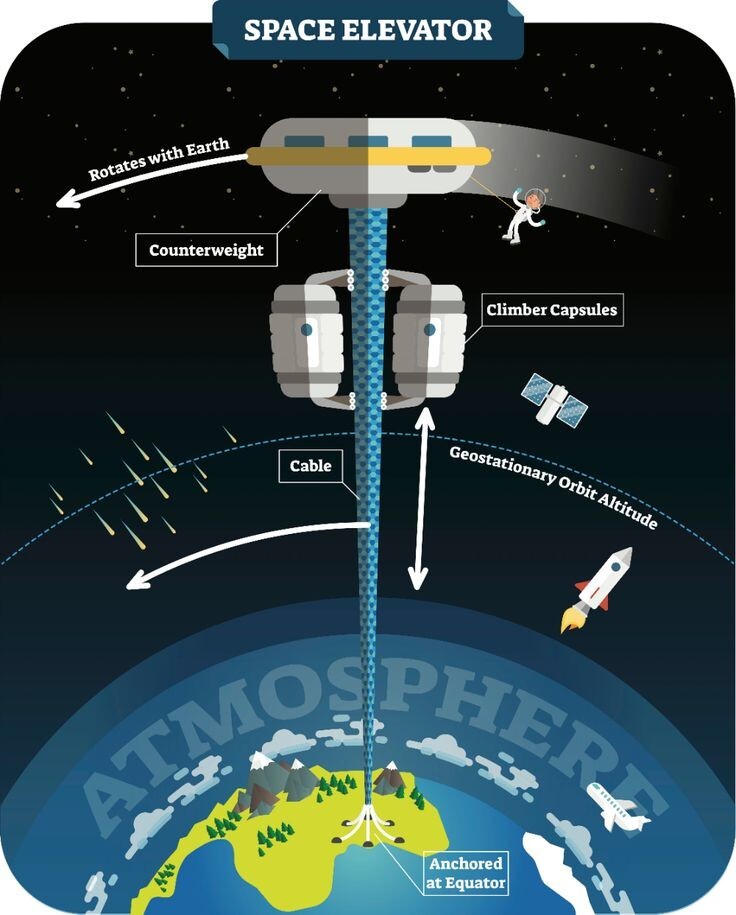
The space station will be located at an altitude of 36,000 km above the Earth, which is 78 times higher than the ISS. Hughes says it will be "more of a train station than a final destination."
“You are already in space, and from this point you can go anywhere,” added the author of the project. 
However, Hughes took care of more than just the functional side of the Ascensio: "If you're going to fly into space, you shouldn't settle for little, it should be an amazing, once-in-a-lifetime experience."
For this reason, he introduced luxurious interiors with swimming pools and jogging tracks. At the other end of the cable, on Earth, the architect has created a stunning floating island with gardens. 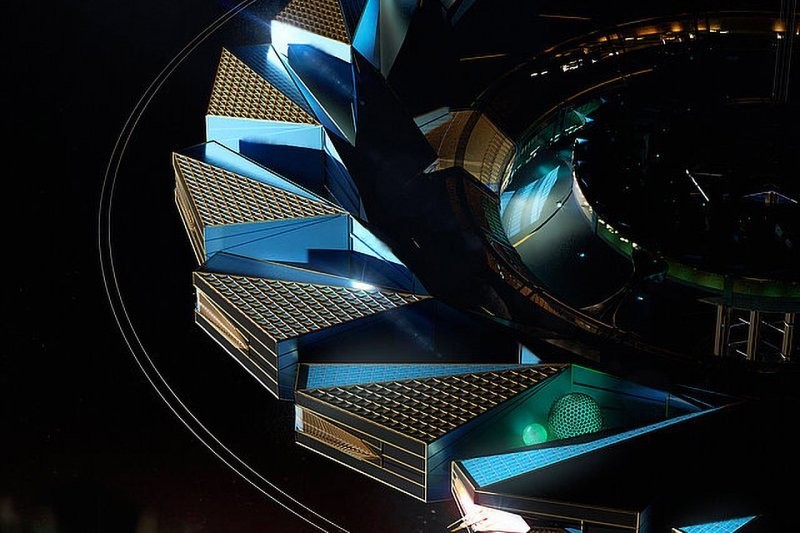
The floating island can move, making travel independent of the weather.
But the main advantage of the elevator is that it is a cheaper and more efficient form of transport to space compared to rockets.
For example, launching a Falcon 9 rocket 460 km to the International Space Station currently costs $67 million. 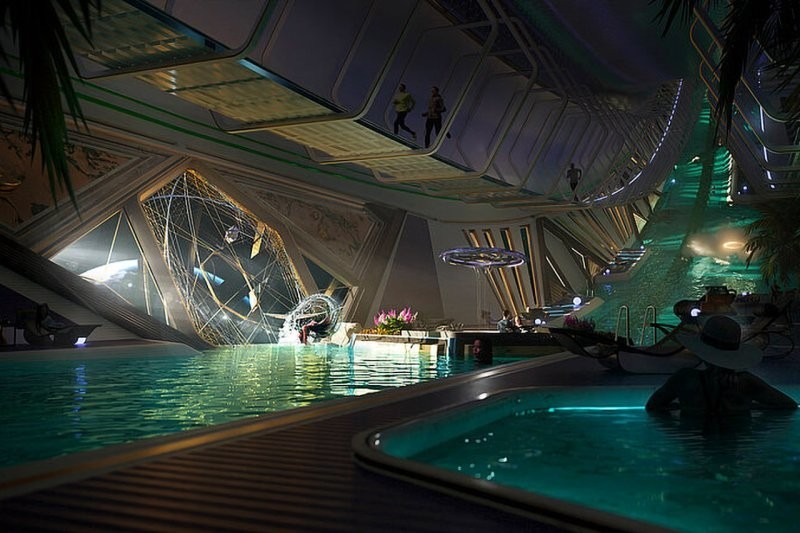
Several technical challenges stand in the way of Hughes and his dream of affordable space travel, chief among them the creation of new materials.
Gravity and centrifugal force will pull the elevator cable in opposite directions; a sufficiently light and strong material is required, but this does not exist yet. 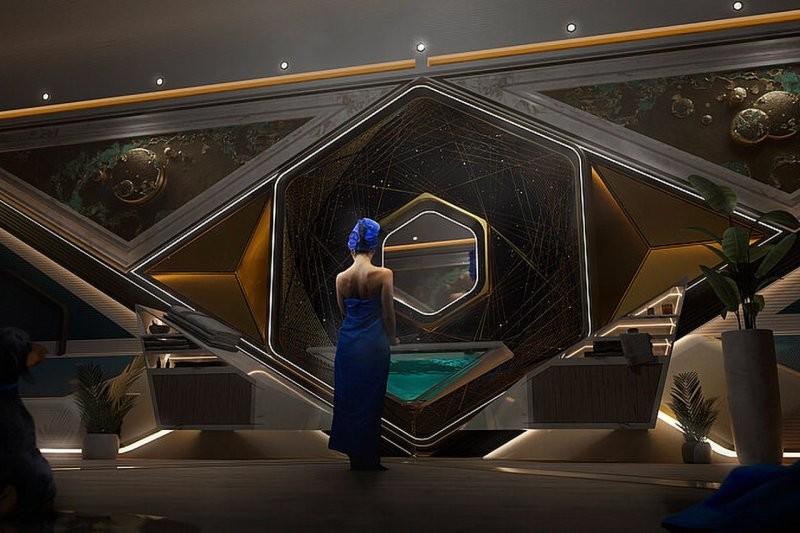
The most promising material at the moment is carbon nanotubes - hollow cylindrical structures made of carbon atoms.
However, this technology is still far from the scale required to realize Hughes's plans. 